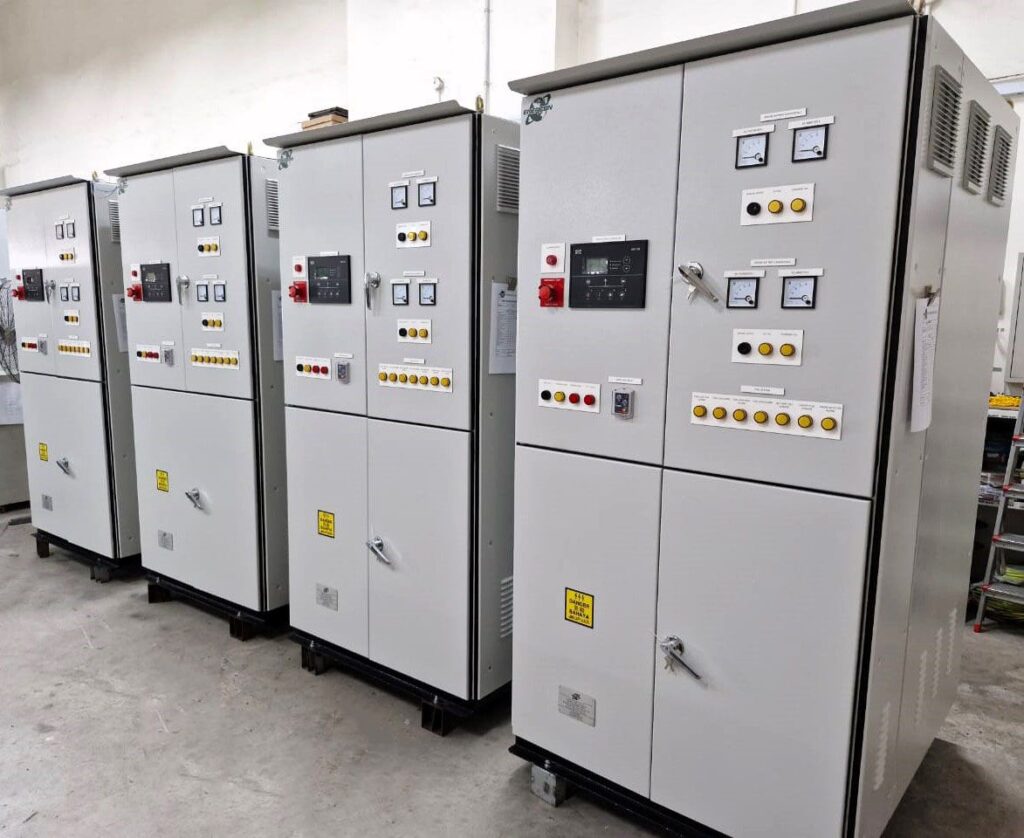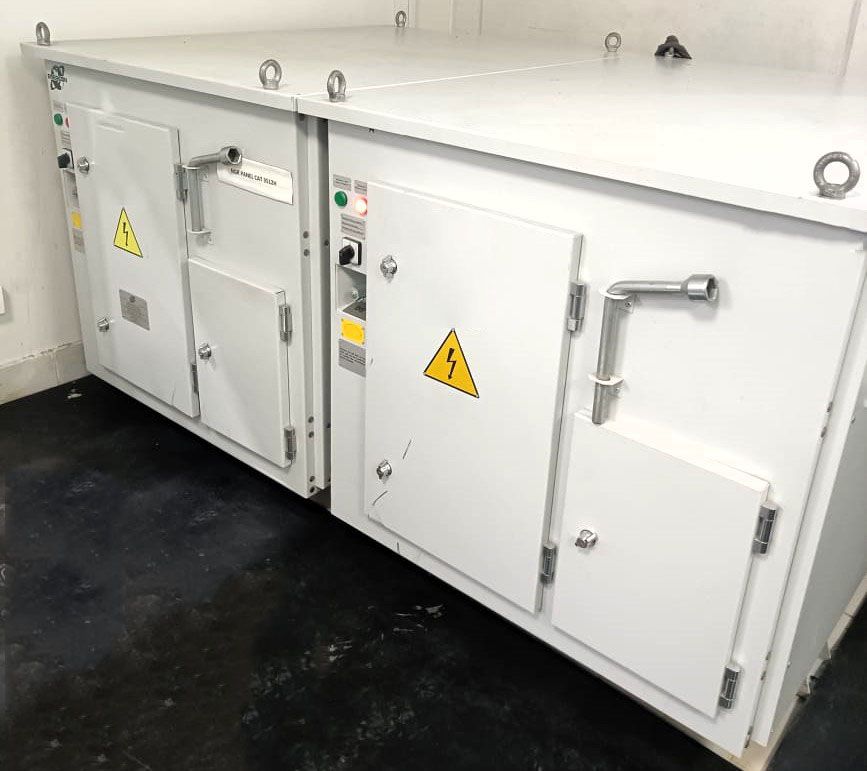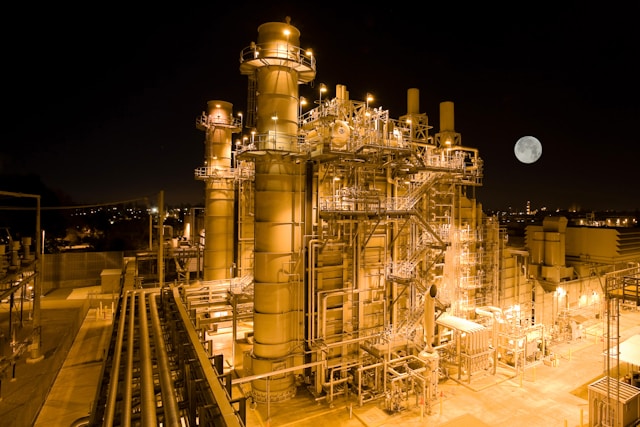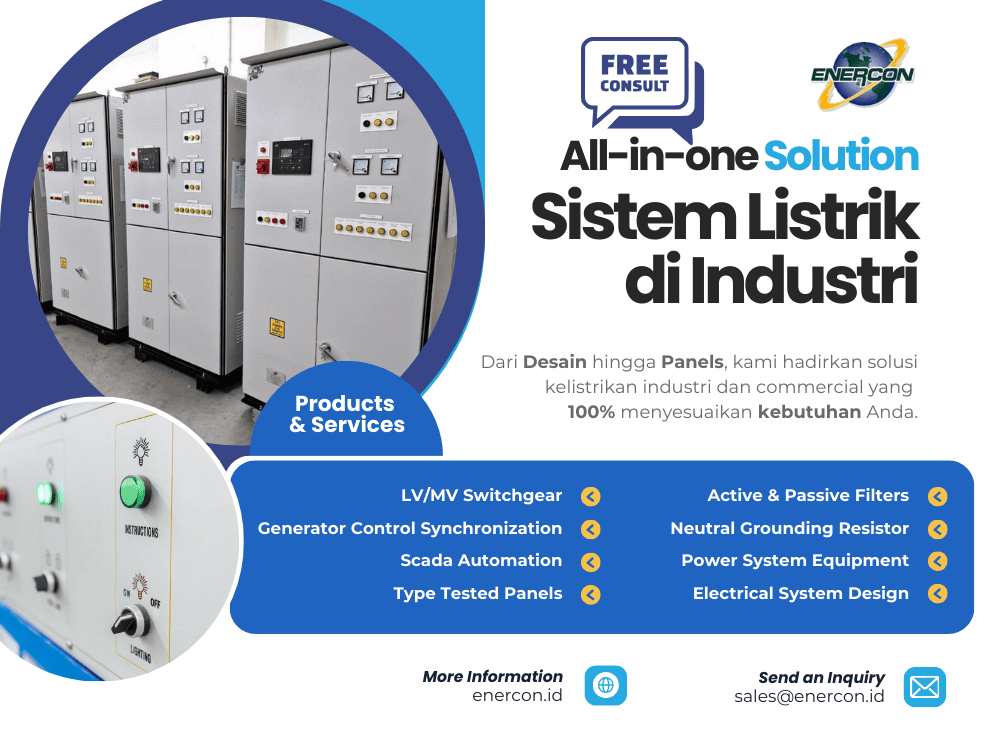In today’s fast-paced commercial and industrial sectors, optimizing energy usage has become more than just a cost-saving measure; it’s now a crucial element in achieving operational efficiency, sustainability goals, and regulatory compliance.
Energy optimization refers to the process of improving how energy is consumed within facilities, ensuring that businesses not only reduce their energy costs but also minimize environmental impact. By refining the way energy is used, commercial buildings and industrial plants can significantly lower operational expenses while maintaining or even enhancing productivity.
Energy optimization is vital for companies looking to stay competitive in a market where energy prices are constantly fluctuating, and there is increasing pressure from regulatory bodies to adopt sustainable practices. Moreover, optimized energy use reduces carbon footprints, aligning businesses with global efforts to combat climate change.
In this article, we will explore proven energy optimization techniques tailored specifically for commercial and industrial environments. These techniques not only lower costs but also ensure compliance with energy regulations and enhance operational efficiency.
What is Energy Optimization?

At its core, energy optimization is about using energy as efficiently as possible while maintaining or even improving operational output. It’s not just about cutting back on energy consumption but about optimizing the energy you use for maximum benefit. In commercial and industrial settings, this often involves balancing between energy supply and demand while ensuring that energy consumption aligns with peak operational performance.
Key Concepts of Energy Optimization
1. Energy Efficiency
This is the first pillar of energy optimization. It focuses on minimizing energy waste by improving the efficiency of systems and equipment. For example, upgrading to energy-efficient lighting, optimizing HVAC systems, and using energy-efficient motors in production lines can significantly reduce energy consumption without compromising performance.
2. Demand-Side Management
This involves adjusting the demand for energy, especially during peak hours when energy costs are the highest. Through demand-side management, businesses can shift non-essential energy use to off-peak hours, or install automation systems that ensure energy is used only when necessary.
3. Peak Shaving
Peak shaving is a strategy used to reduce energy consumption during periods of maximum demand. This can involve using backup energy sources such as batteries or on-site generators to reduce dependency on grid power during these times. It can be particularly useful in industrial environments where energy costs spike during peak hours.
Energy Consumption Analysis for Different Industries
Different industries have varying energy consumption patterns. For example:
- Manufacturing plants often experience energy surges during production cycles, making demand-side management and peak shaving particularly effective.
- Commercial buildings like office spaces and shopping malls might have more stable energy needs but can benefit from optimization techniques such as lighting automation and HVAC controls.
Understanding your industry’s unique energy profile is the first step in identifying optimization opportunities.
Common Misconceptions about Energy Optimization
One common misconception is that energy optimization is solely about cutting energy use. In reality, it’s about improving energy utilization. For example, using energy-efficient machinery may result in higher energy use for certain processes but can significantly reduce operational downtime and maintenance costs, leading to long-term savings.
Another misconception is that energy optimization requires substantial upfront investment. While certain technologies (like advanced automation or renewable energy integration) may require initial capital, many energy optimization strategies, such as energy audits or demand-side management, can be implemented with minimal costs and provide quick returns.
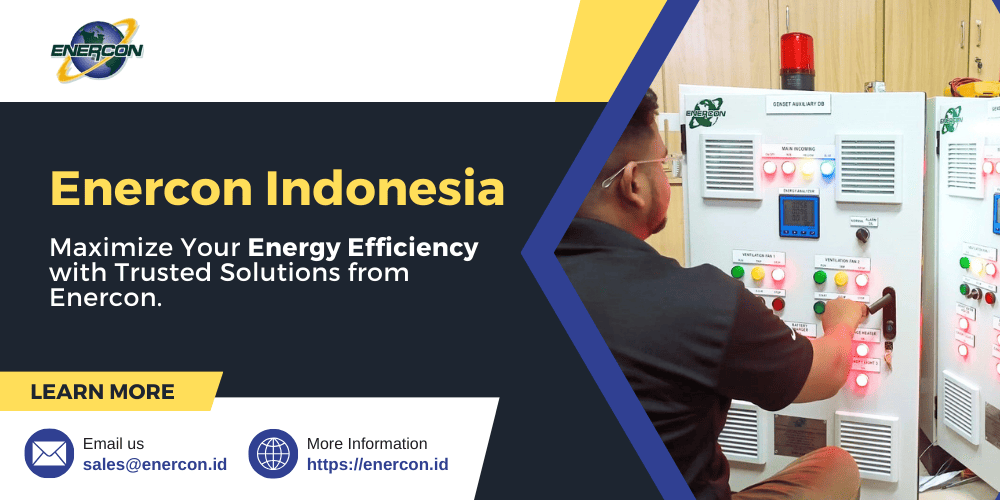
Why Energy Optimization is Crucial for Businesses
For commercial and industrial sectors, the need to optimize energy use has never been more urgent. Rising energy costs, regulatory pressures, and increasing sustainability demands make it essential for businesses to adopt energy optimization strategies. But beyond these external drivers, optimizing energy offers substantial internal benefits that improve both the bottom line and operational performance.
1. Energy Cost Reduction Strategies and Their Impact on Profitability
Reducing energy consumption directly impacts profitability by lowering operational expenses. According to a report by The U.S. Department of Energy, businesses that implement energy efficiency measures can save up to 30% on energy costs. These savings are not just from reducing usage but also from avoiding peak energy rates, identifying inefficiencies in processes, and investing in energy-efficient technologies.
For example, companies can use smart meters and real-time energy monitoring systems to track energy consumption across various operations. This allows facility managers to pinpoint inefficiencies, such as equipment that consumes excess energy during non-operational hours, and correct them promptly. These insights often lead to strategic decisions, like upgrading to more energy-efficient equipment or implementing demand-side management practices that avoid unnecessary energy usage during peak hours.
2. Aligning Energy Optimization with Sustainability Goals
With growing pressure to reduce carbon footprints, businesses that prioritize energy optimization often see improvements in sustainability performance. The International Energy Agency (IEA) states that industrial energy efficiency improvements could account for more than 40% of the total emission reductions needed to meet global climate goals.
Energy optimization not only lowers carbon emissions but also enhances a company’s reputation, especially as more stakeholders and customers prioritize environmentally responsible businesses.
3. Regulatory Pressures and Compliance Advantages
In many countries, businesses are under pressure to comply with energy efficiency regulations and environmental standards. Failure to do so can lead to fines, penalties, or loss of certifications. For example, the European Union’s Energy Efficiency Directive mandates that large companies conduct energy audits every four years and implement energy-saving measures where feasible.
Similarly, in Indonesia, energy-intensive industries are required to report their energy consumption and adopt energy-saving measures as part of the national energy conservation strategy.
By optimizing energy use, businesses not only avoid non-compliance penalties but also position themselves to benefit from government incentives and tax breaks. Many countries offer subsidies for businesses that invest in energy-efficient technologies or conduct energy audits, making the return on investment for energy optimization even more attractive.
The Competitive Advantage of Energy Optimization
Optimizing energy use doesn’t just save costs; it provides a strategic advantage. Companies that invest in energy-efficient technologies and processes are more resilient to fluctuating energy prices and can operate with lower overheads compared to their competitors. Additionally, energy optimization can boost operational efficiency by ensuring that all systems run at their optimal performance, reducing downtime and maintenance costs.
Read: On-Grid vs. Off-Grid Solar Systems: Which Fits Your Energy Needs?
Energy Optimization Techniques for Commercial Buildings
Commercial buildings, such as office spaces, retail environments, and hospitality venues, can achieve significant energy savings through a range of optimization strategies. These techniques not only reduce energy consumption but also enhance operational efficiency, ensuring that building systems function effectively without wasting resources.
1. Smart HVAC Systems and Optimization of Heating/Cooling Loads
Heating, ventilation, and air conditioning (HVAC) systems are typically the largest energy consumers in commercial buildings, accounting for nearly 40% of a building’s total energy use. By implementing smart HVAC systems, businesses can optimize the heating and cooling loads based on occupancy levels, outside weather conditions, and real-time indoor temperature settings. Technologies like smart thermostats, variable air volume systems, and zoning allow for precise control over different areas of a building, reducing energy waste without compromising comfort.
For example, The American Council for an Energy-Efficient Economy (ACEEE) reports that upgrading to an energy-efficient HVAC system can reduce energy consumption by 20-30%. Additionally, HVAC systems can be connected to a building management system (BMS), which allows centralized control and monitoring, further optimizing energy use across the entire facility.
2. Lighting Upgrades: Using LED, Sensors, and Automation
Lighting is another significant contributor to energy consumption in commercial buildings. Switching from traditional lighting to LED (Light Emitting Diode) technology can reduce lighting energy usage by up to 75%. LED lighting lasts longer, requires less maintenance, and provides better light quality compared to older technologies like fluorescent and incandescent bulbs.
Additionally, integrating occupancy sensors and daylight harvesting systems ensures that lights are only used when necessary. Occupancy sensors automatically turn lights on or off based on whether the room is in use, while daylight harvesting adjusts lighting levels based on natural light availability. This combination of LED lighting and automation can lead to dramatic reductions in energy use. For example, according to Energy Star, businesses can save up to 30% on lighting costs with these upgrades.
3. Utilizing Building Management Systems (BMS) to Track and Optimize Energy Usage
A Building Management System (BMS) plays a critical role in energy optimization for commercial buildings. BMS platforms collect data from HVAC, lighting, security, and other systems, enabling facility managers to monitor energy consumption in real time. By identifying trends, anomalies, and inefficiencies, managers can take immediate actions to optimize performance and reduce energy waste.
For example, The Chartered Institution of Building Services Engineers (CIBSE) notes that integrating a BMS can lead to energy savings of 15-20%, particularly when used for continuous commissioning, where building systems are regularly fine-tuned for optimal performance.
Industrial Energy Optimization Techniques
Industries such as manufacturing, food processing, and logistics have complex energy demands, making energy optimization a critical factor in reducing operational costs and improving efficiency. Industrial facilities often require more advanced, technical approaches to optimize their energy use, given the scale and diversity of equipment and processes involved. Below are key techniques that industries can adopt to achieve significant energy savings.
1. Energy Audits: Identifying Waste and Improving Processes
An energy audit is the first step toward identifying areas where energy is being wasted. Through a comprehensive review of energy usage across a facility, an audit reveals inefficiencies, pinpointing equipment or processes that consume more energy than necessary.
According to the U.S. Environmental Protection Agency (EPA), businesses that conduct regular energy audits can uncover energy-saving opportunities that reduce consumption by 10-15%. Audits typically assess energy usage in machinery, lighting, HVAC systems, and other processes to provide data-driven recommendations for improvements. For example, energy-intensive equipment can be retrofitted or replaced with more efficient alternatives, and production schedules can be adjusted to minimize energy use during peak demand periods.
2. Optimizing Machinery and Production Lines: Predictive Maintenance and AI-powered Systems
In industrial settings, machinery optimization plays a pivotal role in energy efficiency. One of the most effective techniques is the implementation of predictive maintenance. By using sensors and real-time data, companies can monitor equipment performance and predict when a machine is likely to fail, allowing for timely maintenance that prevents energy waste due to malfunctioning machinery.
Additionally, integrating artificial intelligence (AI)-powered systems can further enhance machinery optimization. AI systems analyze data from various production lines to identify inefficiencies and recommend real-time adjustments to improve energy use. McKinsey & Company reports that AI-based energy optimization in manufacturing can result in energy savings of up to 20%.
3. Energy Storage and Grid Integration Techniques: Microgrids and Energy Storage Systems
As industries increasingly rely on renewable energy sources, energy storage becomes essential for optimizing energy use. Technologies such as battery energy storage systems (BESS) and microgrids allow industrial facilities to store excess energy generated during off-peak hours or by on-site renewable sources like solar panels. This stored energy can then be used during peak demand, reducing reliance on the grid and lowering energy costs.
Microgrids also provide enhanced reliability and resilience, especially in industries where continuous power is critical to operations. For instance, the U.S. Department of Energy highlights the growing adoption of microgrids in industrial settings to help facilities maintain power during grid outages while optimizing energy use for maximum efficiency.
4. Renewable Energy Integration and Reducing Carbon Footprint
Industrial facilities are increasingly incorporating renewable energy sources, such as solar, wind, and biomass, into their energy mix. This not only reduces their dependency on fossil fuels but also aligns with sustainability goals by lowering carbon emissions. Installing solar panels, for example, can reduce energy costs significantly, especially in countries with abundant sunlight like Indonesia.
Moreover, industries that integrate renewable energy into their operations can take advantage of government incentives and tax credits designed to encourage clean energy use. The International Renewable Energy Agency (IRENA) estimates that integrating renewable energy into industrial processes can reduce energy costs by up to 30%.
5. Process Optimization and Lean Energy Practices
Implementing lean energy practices—which focus on minimizing energy waste in production processes—can lead to significant energy savings. For example, optimizing the production schedule to align with periods of lower energy demand can reduce peak energy costs. Lean manufacturing techniques, such as just-in-time production and total productive maintenance (TPM), help minimize energy waste throughout the production process.
Read: How to Reduce Harmonic Distortion in Industrial Power Systems
Tools and Technologies for Energy Optimization
As businesses seek to optimize energy usage, various tools and technologies are emerging to support these efforts. From advanced energy management software to real-time monitoring devices, these technologies help commercial and industrial facilities track, analyze, and optimize their energy consumption with greater precision and efficiency.
1. Energy Management Software and Monitoring Tools
One of the most powerful tools for optimizing energy is Energy Management Software (EMS). These platforms allow businesses to monitor energy consumption across different areas of their operations in real-time. By providing detailed analytics, EMS can identify inefficiencies, set benchmarks, and track performance against energy-saving goals.
For instance, Schneider Electric’s EcoStruxure™ is a popular EMS that helps industries track energy usage, optimize operational performance, and reduce costs. According to Energy.gov, businesses using EMS have reported energy savings of up to 30%, especially when combined with other optimization strategies like demand-side management.
2. AI and Machine Learning for Predictive Energy Management
Artificial Intelligence (AI) and machine learning (ML) are revolutionizing energy optimization by enabling predictive management systems. These technologies analyze historical data on energy consumption, equipment performance, and external factors such as weather patterns. The systems then use these insights to predict energy demand, optimize equipment settings, and adjust processes for maximum efficiency.
For example, a study by Deloitte shows that AI-driven energy management systems can reduce energy consumption by up to 15% in industrial settings, with further benefits in predictive maintenance that helps reduce equipment downtime.
3. Smart Meters and Real-Time Energy Tracking
Smart meters are essential tools for tracking energy use in real-time. They provide businesses with granular data on how and when energy is consumed. This allows facility managers to identify patterns of energy waste, such as machinery left running during off-peak hours or inefficient heating systems.
According to The Carbon Trust, smart meters can help businesses reduce their energy bills by up to 10% simply by improving awareness and enabling more informed decisions about energy use. Smart meters are particularly useful when paired with EMS and other monitoring platforms, providing the real-time data necessary to optimize energy consumption dynamically.
4. IoT Sensors for Granular Energy Usage Insights
The Internet of Things (IoT) is becoming increasingly important in energy optimization. IoT sensors can be installed across various points in a facility to monitor specific equipment, processes, or environmental conditions that impact energy use. For instance, IoT sensors can monitor temperature, humidity, or machine performance, allowing facility managers to make informed decisions about when to adjust settings for optimal efficiency.
IoT sensors work in tandem with AI and energy management platforms to provide a detailed, real-time view of energy consumption across all aspects of a business. The World Economic Forum reports that the integration of IoT in industrial energy management can reduce energy usage by up to 25%.
5. Cost-Benefit Analysis Tools
To ensure that energy optimization strategies are cost-effective, many businesses use cost-benefit analysis tools. These tools assess the financial viability of implementing energy-saving technologies or retrofitting existing systems. For example, tools such as RETScreen® help companies evaluate the costs, savings, and return on investment (ROI) of energy-efficient upgrades, allowing them to make data-driven decisions.
According to Natural Resources Canada, the use of RETScreen® has resulted in documented energy cost savings of over $8 billion across various industries globally.
Best Practices for Implementing Energy Optimization Strategies
Implementing energy optimization strategies effectively requires a structured and well-thought-out approach. While the benefits of energy optimization are clear—reduced costs, improved efficiency, and better sustainability—businesses need a roadmap to ensure that these strategies are deployed successfully. Below are best practices for implementing energy optimization in commercial and industrial settings.
1. Conduct a Thorough Energy Audit and Assessment
The foundation of any energy optimization initiative is a detailed energy audit. This process involves analyzing all energy-consuming systems and identifying inefficiencies or areas for improvement. By conducting an audit, businesses can understand where the majority of energy is being consumed, and more importantly, where energy is being wasted.
Energy audits generally come in two forms:
- Walk-through audits, which provide a quick overview of energy consumption, identifying obvious inefficiencies.
- Comprehensive audits, which involve a deep dive into all energy-using systems, often using specialized equipment to measure consumption over time.
According to Energy Star, conducting a comprehensive audit can result in energy savings of 10-20% on average. The audit also provides a baseline to measure future improvements and track the success of implemented strategies.
2. Set Realistic and Measurable Energy-Saving Goals
Once the energy audit is complete, businesses need to set realistic and measurable goals for energy savings. These goals should be based on industry benchmarks and should consider both short-term wins (such as upgrading lighting or HVAC systems) and long-term strategies (like incorporating renewable energy sources).
The U.S. Department of Energy suggests that setting specific, measurable, achievable, relevant, and time-bound (SMART) goals increases the likelihood of success in energy-saving efforts. For example, a company might set a goal to reduce energy consumption by 15% within the first year, with sub-goals such as improving HVAC efficiency or installing LED lighting in 50% of the building.
3. Engage Stakeholders and Build a Culture of Energy Efficiency
Energy optimization is not a one-time task; it requires a collective effort from all stakeholders within the organization. From facility managers and engineers to employees who use the energy-intensive equipment, everyone plays a role in achieving energy efficiency.
Employee training on energy-saving practices is crucial. Engaging staff in simple actions, like turning off unused equipment or optimizing machine settings, can make a significant difference. Building a culture of energy efficiency ensures that everyone is aware of the importance of energy-saving efforts and actively participates in reducing waste.
In a survey conducted by The Alliance to Save Energy, businesses that foster a culture of energy efficiency reported achieving 10-15% more savings than those that solely relied on technological solutions.
4. Continuously Monitor and Adjust Energy Strategies
Energy optimization is an ongoing process. It’s essential to continuously monitor energy usage and adjust strategies as needed. Many businesses use energy management systems (EMS) to track consumption in real-time, allowing for dynamic adjustments.
For example, if energy use increases unexpectedly in a certain part of the facility, EMS can alert managers to the issue, enabling them to take immediate corrective action. Continuous monitoring also ensures that equipment is performing at its most efficient level and helps to identify new areas where additional optimizations can be made.
The Carbon Trust emphasizes that businesses that continuously monitor and adjust their energy use can see improvements of up to 20% in energy savings.
5. Balance Long-term and Short-term Benefits
Energy optimization strategies should be designed with both immediate and future benefits in mind. While some upgrades, such as switching to LED lighting, may offer quick returns, others, like integrating renewable energy sources or installing advanced building management systems, may take longer to pay off but yield significant long-term savings.
The International Energy Agency (IEA) recommends a balanced approach that includes both low-cost, quick-win strategies, as well as larger investments in long-term solutions that contribute to sustained energy savings over time. By balancing short-term gains with long-term objectives, businesses can achieve sustainable energy savings while maintaining operational efficiency.
Read: SCADA vs PLC: Which is the Best Choice for Industrial Automation?
Case Studies: Successful Energy Optimization in Action
To illustrate the real-world benefits of energy optimization, here are two case studies showcasing how commercial and industrial sectors have successfully implemented energy optimization strategies. These examples provide valuable insights into the practical application of the techniques discussed earlier, showing the impact of energy optimization on both operational efficiency and cost savings.
1. Case Study: Commercial Building – The Empire State Building, New York City
One of the most iconic examples of energy optimization is the Empire State Building, which underwent a major energy efficiency retrofit as part of its sustainability efforts. This project included a comprehensive range of energy optimization strategies aimed at reducing energy consumption while improving operational efficiency.
Key Measures Implemented:
- Smart HVAC system upgrades and the installation of automated controls to optimize heating and cooling based on occupancy and weather patterns.
- LED lighting retrofits throughout the building, combined with occupancy sensors to ensure lights were only used when necessary.
- Integration of a Building Management System (BMS) that provided real-time monitoring and control over the building’s energy consumption.
Results: The energy retrofit resulted in a 38% reduction in energy consumption, translating to annual savings of over $4 million. Additionally, the building’s carbon emissions were reduced by 105,000 metric tons over a 15-year period. This project highlights the significant long-term savings and sustainability benefits that energy optimization can deliver.
2. Case Study: Industrial Facility – Toyota’s Lean Energy Approach
In the industrial sector, Toyota serves as an exemplary case of how energy optimization can be embedded into manufacturing processes. By adopting a lean energy management approach, Toyota not only reduced its energy consumption but also improved overall production efficiency.
Key Measures Implemented:
- Conducting regular energy audits to identify inefficiencies across production lines and machinery.
- Utilizing predictive maintenance powered by AI to reduce downtime and energy waste due to malfunctioning equipment.
- Integrating renewable energy sources such as solar power and energy storage systems to reduce reliance on grid electricity during peak hours.
Results: Toyota reported a 30% reduction in energy use across its manufacturing plants, significantly lowering operational costs. The use of predictive maintenance systems alone helped decrease energy-related equipment failures by 50%, which led to fewer production stoppages and higher overall efficiency. Furthermore, the company saw a 45% reduction in carbon emissions as a result of incorporating renewable energy sources into its operations.
3. Case Study: Data Center – SIN12 Digital Realty Data Center, Singapore
In the world of data centers, where energy consumption is extremely high due to the need for continuous cooling and power, Digital Realty’s SIN12 Data Center in Singapore showcases how energy optimization can drive significant savings.
Key Measures Implemented:
- Installation of smart HVAC systems to precisely control cooling loads based on the real-time temperature within the facility.
- Use of free cooling systems, which take advantage of outdoor air conditions to reduce the energy needed for cooling during certain parts of the year.
- Integration of redundant power systems and energy-efficient UPS (Uninterruptible Power Supply) systems to ensure maximum efficiency in power management.
Results: By optimizing its cooling and power management systems, Digital Realty’s SIN12 Data Center reduced its Power Usage Effectiveness (PUE) to 1.3, which is considered highly efficient for a facility of its scale. This resulted in substantial energy cost savings, estimated at over $1 million annually, while also reducing its environmental impact.
Conclusion
Energy optimization is essential for businesses looking to cut costs, improve operational efficiency, and meet sustainability goals. As energy prices rise and regulations tighten, companies that prioritize energy optimization will gain a competitive edge. The future of energy management lies in the adoption of renewable energy, AI-driven systems, and smart grids, all of which help reduce energy waste and ensure compliance with evolving regulations.

Now is the time to act. Partner with Enercon Indonesia to implement effective energy optimization strategies tailored to your business needs. Whether you’re aiming to reduce energy costs, integrate renewable energy, or enhance operational efficiency, Enercon Indonesia offers the expertise and solutions to help you succeed. Contact us today!


